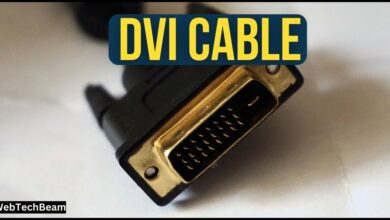Display Port Cable vs HDMI

Two types of cables are used to connect devices to screens: DisplayPort and HDMI. DisplayPort, primarily intended for computer use, supports high resolutions and refresh rates. Conversely, home entertainment systems like TVs, game consoles, and Blu-ray players frequently use HDMI. While audio and video signals are sent by both connections, their characteristics and functionalities differ.
Understanding the distinctions between DisplayPort and HDMI is essential if you want to select the appropriate cable for your requirements. Whether working on a computer, playing a game, or watching a movie, using the correct cable can guarantee that your gadgets operate at their peak efficiency.
In this post we will discuss in detail about “Display Port Cable vs HDMI“
Use Cases for Each Type of Cable
DisplayPort:
- It is ideal for computer monitors, especially if you need high resolution and fast refresh rates for gaming or professional graphics work.
- Supports multiple monitors with one cable.
HDMI:
- Best for TVs, home theatres, and gaming consoles.
- Widely compatible with most home entertainment devices.
What is HDMI?
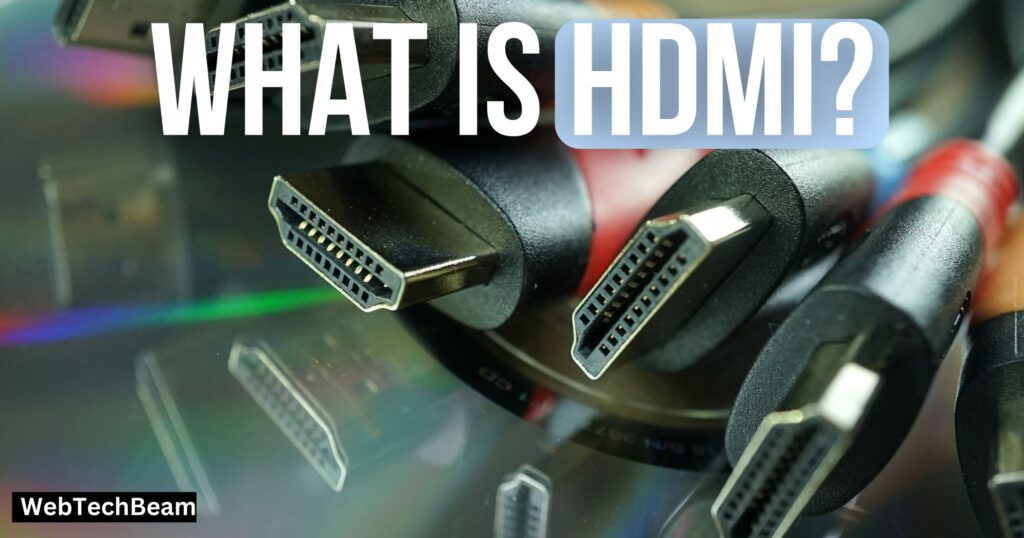
High-Definition Multimedia Interface, or HDMI, is a cable that sends audio and video information between devices. It is immensely helpful for connecting devices to display panels, such as TVs, game consoles, and Blu-ray players.
History and Development of HDMI
Early in the new millennium, HDMI technology was created to replace earlier cable types that could carry audio or video but not both.
Since its launch, HDMI has established itself as the industry standard for home theatre systems. This is because it transmits high-definition audio and video information with only one straightforward connection.
Technical Specifications
With its many functions, HDMI cables can be used for a range of purposes.
- Resolution: 720p, 1080p, and 4K high-definition video resolutions are supported with HDMI cables.
- Audio Formats: They can transmit various audio formats, such as Dolby Atmos, surround sound, and normal stereo.
- Bandwidth: High-bandwidth HDMI cables can swiftly handle enormous amounts of data, which is essential for audio and video of the highest calibre.
- Versions: The HDMI standard has undergone changes over time, resulting in the release of HDMI 1.4, 2.0, and 2.1, each of which offers enhancements in terms of speed, resolution, and functionality.
Types of HDMI Cables
HDMI cables come in a variety of forms, each intended for a particular purpose:
- Standard HDMI: The most widely used variety is standard HDMI, which is used in most TVs, home entertainment systems, and game consoles.
- Mini HDMI: This type of HDMI is typically found in tiny gadgets like tablets and cameras. It is smaller than conventional HDMI.
- Micro HDMI: Micro HDMI is used in tiny devices like smartphones and action cameras and is even smaller than mini HDMI.
Common Uses
HDMI cables are widely available and adaptable to many environments.
- TVs: The most popular use is linking a TV to other gadgets such as Blu-ray players, streaming players, and cable boxes.
- Gaming Consoles: TVs and monitors can be connected to game consoles, including the PlayStation and Xbox, via HDMI cables.
- Blu-ray Players: They offer the best way to enjoy high-definition movies from Blu-ray discs.
Understanding the different aspects of HDMI will help you make informed decisions about how best to use this technology in your home.
What is DisplayPort?
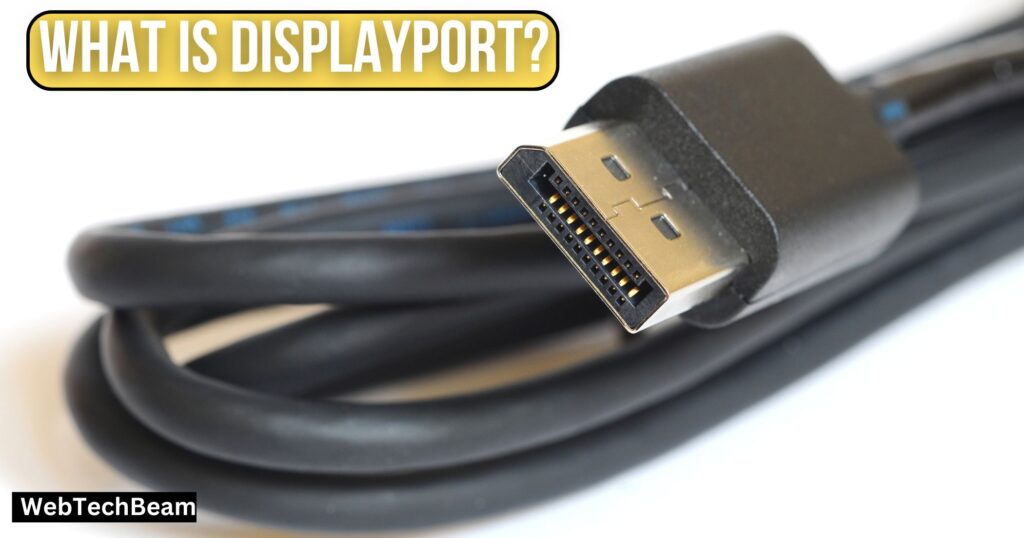
A display device, like a computer monitor, can be connected to a video source using a cable called a DisplayPort. It is especially well-liked in the field of professional graphics and computers since it offers high-quality video and audio transmission.
History and Development of DisplayPort
The Video Electronics Standards Association (VESA) created DisplayPort in 2006. With its improved performance and broader range of features, it was designed as a contemporary interface to replace outdated standards like VGA and DVI. Since its launch, DisplayPort has had multiple updates, which have enhanced its functionality and performance.
Technical Specifications
DisplayPort cables come with several features that make them suitable for high-end applications:
- Resolution: DisplayPort supports high resolutions, including 1080p, 4K, and 8K.
- Refresh Rates: It can handle fast refresh rates, which is essential for gaming and professional graphics.
- Audio and Video: DisplayPort can transmit audio and video signals like HDMI.
- Multi-Stream Transport (MST): This allows multiple monitors to be connected to a single DisplayPort output, reducing the required cables.
Types of DisplayPort Cables
There are two main types of DisplayPort cables:
- Standard DisplayPort: This is the most common type for desktop computers and monitors.
- Mini DisplayPort: Smaller than the standard version, Mini DisplayPort is often found in laptops and other compact devices.
Common Uses
DisplayPort is widely used in various settings:
- Computer Monitors: It’s ideal for connecting desktop computers to monitors, especially for tasks that require high resolution and fast refresh rates.
- Professional Graphics Cards: DisplayPort is often used with high-end graphics cards designed for gaming, video editing, and experienced graphic design.
Understanding DisplayPort and its features can help you choose the best cable and setup for your computer and display needs.
Comparison of DisplayPort and HDMI
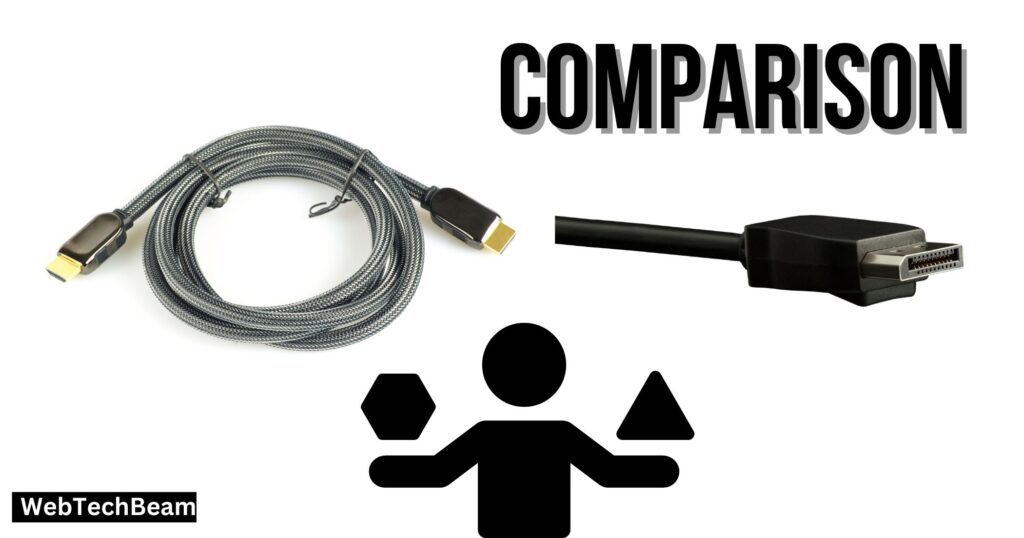
Video Quality
Maximum Resolutions Supported
HDMI and DisplayPort both support high resolutions, with HDMI 2.1 reaching up to 10K and DisplayPort 2.0 supporting up to 16K. These high resolutions are ideal for ultra-high-definition displays, providing exceptional clarity and detail.
Refresh Rates for Each Interface
Refresh rates are crucial for smooth video playback and gaming. HDMI 2.1 supports refresh rates up to 120Hz at 4K and 60Hz at 8K. DisplayPort 2.0, on the other hand, supports even higher refresh rates, reaching up to 240Hz at 4K and 120Hz at 8K.
HDR Support
HDMI and DisplayPort support HDR (High Dynamic Range), enhancing video contrast and colour range. This technology provides more vivid and lifelike images, making it a valuable feature for modern displays.
Color Depth and Chroma Subsampling
Colour depth refers to the number of bits used for each colour component, affecting the range of colours that can be displayed. Both HDMI and DisplayPort support up to 48-bit colour depth. Both interfaces also support chroma subsampling, where some colour information is compressed. Still, DisplayPort performs better in maintaining higher chroma subsampling ratios, providing more prosperous and accurate colours.
Audio Capabilities
Types of Audio Formats Supported
Both HDMI and DisplayPort cables can transmit high-quality audio signals alongside video. They support various audio formats, including standard formats like stereo and more advanced formats such as Dolby Atmos and DTS: X. This versatility ensures that these cables can handle the transmission effectively no matter what audio setup you have.
Multi-Channel Audio Support
One of the standout features of both HDMI and DisplayPort is their ability to support multi-channel audio. This means they can carry sound across multiple speakers, offering an immersive audio experience ideal for home theatres and gaming setups. For instance, a 5.1 or 7.1 channel system can provide a surround sound experience, making entertainment more engaging.
Audio Return Channel (ARC) Capabilities
ARC, or Audio Return Channel, is a feature available on HDMI cables that simplifies the way we connect audio devices. With ARC, your TV can send audio back to your audio system, such as a soundbar, using the same HDMI cable that brings video to the TV. This eliminates the need for additional cables, reducing clutter and making the setup process much more straightforward. However, it’s worth noting that DisplayPort does not support ARC.
Understanding these audio capabilities helps you get the most out of your audiovisual equipment, ensuring the best experience possible.
Bandwidth
Data Transfer Rates
Bandwidth refers to the amount of data that can be transmitted over a cable in a given amount of time. For HDMI and DisplayPort cables, higher bandwidth means they can carry more data, resulting in better video and audio quality.
How Bandwidth Impacts Performance
Higher bandwidth allows for higher resolutions and faster refresh rates. This means smoother video playback, better gaming experiences, and the ability to use advanced features like HDR and deep colour. If your cable’s bandwidth is too low, you might experience lag, lower image quality, or even an inability to display high resolutions correctly.
Version Comparisons (HDMI 2.0 vs DisplayPort 1.4, etc.)
Different versions of HDMI and DisplayPort offer various levels of bandwidth. For example:
- HDMI 2.0: This version supports up to 18 Gbps (gigabits per second) of data transfer, allowing for 4K resolution at 60Hz.
- DisplayPort 1.4: This version supports up to 32.4 Gbps, enabling 4K at 120Hz or 8K at 60Hz.
The higher the number, the more data they can transfer, and the better the performance you’ll experience with compatible devices.
Connection and Compatibility
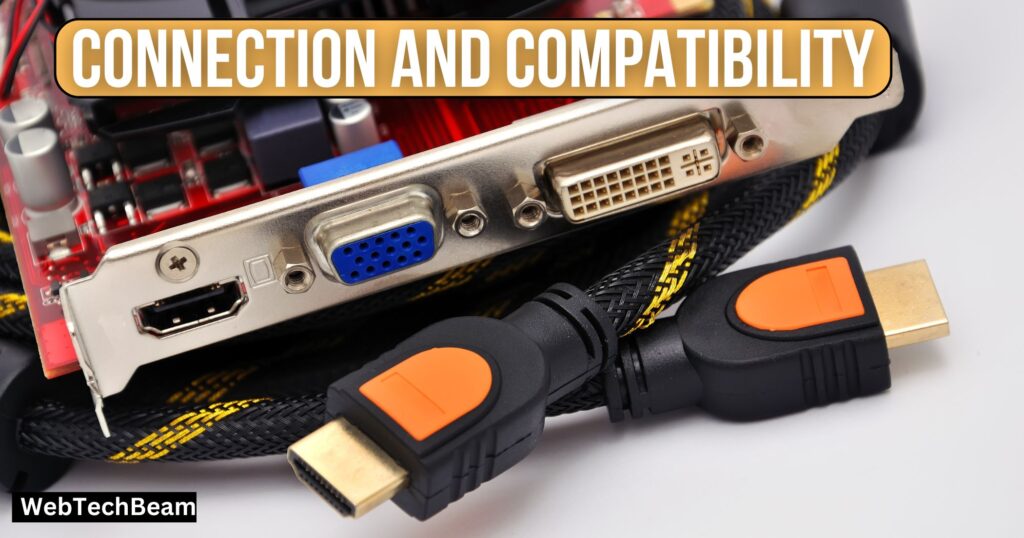
Types of Connectors and Ports
Display Port Cable vs HDMI each have distinct connector types. HDMI connectors come in several sizes, including standard (Type A), mini (Type C), and micro (Type D). DisplayPort connectors also have standard and mini versions, with the standard connector being slightly larger.
Physical Differences
While HDMI and DisplayPort cables look similar, there are physical differences. HDMI connectors have a trapezoidal shape with 19 pins, while DisplayPort connectors are rectangular and have a unique locking mechanism to prevent accidental disconnections. This locking feature makes DisplayPort cables secure when connected but slightly more complicated to unplug.
Compatibility with Older Devices
Both HDMI and DisplayPort strive to maintain backward compatibility with older versions of the same interface. This means newer HDMI ports will work with older HDMI cables, and the same is true for DisplayPort. However, to fully utilize newer capabilities like higher resolutions or refresh rates, it’s best to use the latest versions of cables and ports.
Adaptability with Other Interfaces (HDMI to DisplayPort Adapters and Vice Versa)
Adapters are available to connect HDMI to DisplayPort and vice versa. This is particularly useful if you have a device with only HDMI output but need to connect it to a DisplayPort monitor or vice versa. These adapters help maintain versatility in various setups, ensuring that different devices can work together smoothly.
Additional Features
Support for Multiple Displays
Both HDMI and DisplayPort support connecting multiple displays to a single device. This is especially useful for setups that require more screen space, like gaming rigs, graphic design workstations, or professional environments. DisplayPort often excels in this area, supporting daisy-chaining multiple monitors together with a single cable.
Copy Protection and Content Protection (HDCP, DPCP)
To prevent illegal copying of digital content, both HDMI and DisplayPort implement copy protection technologies. HDMI uses HDCP (High-bandwidth Digital Content Protection), while DisplayPort uses DPCP (DisplayPort Content Protection). These technologies encrypt the data being transferred, ensuring that only authorized devices can display the content.
Implementation of Other Technologies (FreeSync, G-Sync)
HDMI and DisplayPort also support advanced technologies like FreeSync and G-Sync, which are designed to improve gaming experiences. These technologies help to reduce screen tearing and stuttering by synchronizing the display’s refresh rate with the graphics card’s frame rate. This results in smoother visuals and a more enjoyable gaming experience.
Pros and Cons
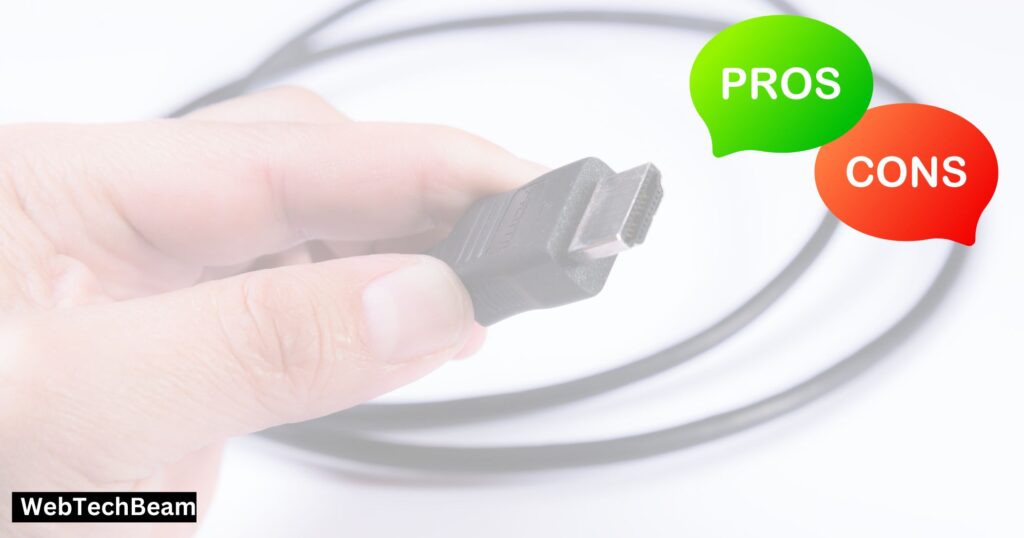
Pros of HDMI
Broad compatibility with consumer electronics: HDMI is used in various devices, including TVs, game consoles, computers, and streaming devices. This makes it incredibly versatile and ensures that your devices can easily connect with each other.
Easier to find on mainstream devices: HDMI ports are a standard feature on most modern electronics. Whether you are buying a new TV, laptop, or sound system, you are likely to find at least one HDMI port, making it easier to set up and use your devices.
HDMI ARC for audio return: The Audio Return Channel (ARC) feature in HDMI allows for easy audio setup. With HDMI ARC, you can send audio from your TV back to your sound system using the same HDMI cable that you use for video. This reduces the need for multiple cables and simplifies your home entertainment system.
Cons of HDMI
While HDMI is widely compatible and easy to use, it has some drawbacks:
- Slower Data Transfer Rates than DisplayPort: HDMI typically transfers data slower than DisplayPort. This can be a limitation if you need very high-speed data transfer for activities like gaming or video editing.
- Limited Support for Very High Resolutions and Refresh Rates in Earlier Versions: Older versions of HDMI may not support the highest screen resolutions or the fastest refresh rates. This means you might not get the best possible video quality, especially if you’re using older HDMI cables or devices. To fully utilize the latest technology, you may need to upgrade to newer HDMI versions.
Pros of DisplayPort
Higher Bandwidth Capabilities: Compared to HDMI, DisplayPort can handle more data at once. This means it can support higher screen resolutions and faster refresh rates, which is excellent for getting the best picture quality on your monitor or TV.
Better Suited for High-Performance Setups: If you’re into gaming or do work that requires a lot of graphic power, DisplayPort is usually the better choice. It helps deliver smoother and faster visuals, making your gaming or professional tasks look and run better.
Supports Multiple Displays from a Single Connection: One of the most excellent features of DisplayPort is connecting several monitors to your device using just one DisplayPort connection. This is called “daisy-chaining,” it helps you expand your screen space quickly without needing a bunch of extra cables.
Cons of DisplayPort
Less common in consumer devices: One downside of DisplayPort is that it’s less widely used in everyday consumer electronics like TVs and standard laptops. While it’s trendy in high-performance setups and professional environments, you might find it on less common devices, limiting its usability for some people.
May require adapters for compatibility with HDMI-only devices: Another inconvenience is that DisplayPort may need adapters to work with devices that only have HDMI ports. If your monitor or TV only supports HDMI, you’ll need a special adapter to connect it to your DisplayPort cable. This can add to the cost and make the setup process more complicated.
Use Case Scenarios: Display Port Cable vs HDMI
Best Scenarios for Using HDMI
HDMI is ideal for everyday consumer electronics like TVs, streaming devices, and game consoles. If you have a home entertainment setup, HDMI is your friend because it’s simple and widely compatible. Most TVs and sound systems come with HDMI ports, so you can easily connect your devices without any hassle.
If you want an easy audio setup, HDMI ARC (Audio Return Channel) can send sound from your TV back to your audio system, reducing the number of cables you need. For most standard uses, like watching movies, playing video games, and connecting laptops to larger screens, HDMI is a practical and user-friendly choice.
Best Scenarios for Using DisplayPort
DisplayPort excels in high-performance setups, making it perfect for serious gamers and professionals who need top-notch visual quality. If you work in graphic design, video editing, or any field requiring high resolution and fast refresh rates, DisplayPort can deliver smooth, high-quality visuals. It’s also excellent for gaming rigs, where you need quick data transfer to keep up with fast-paced action.
Additionally, if you need a multi-monitor setup, DisplayPort supports daisy-chaining monitors. This means you can connect multiple screens using a single DisplayPort cable, which is incredibly useful for expanding your workspace without a mess of wires.
FAQs
What is the main difference between HDMI and DisplayPort?
The main difference lies in their primary use cases. HDMI is best suited for everyday consumer electronics such as TVs and game consoles, offering ease of use and widespread compatibility. DisplayPort, on the other hand, is designed for high-performance setups, delivering higher resolutions, faster refresh rates, and superior multi-monitor support.
Can I use HDMI and DisplayPort interchangeably?
While both can connect video and audio sources to displays, they are only partially interchangeable. DisplayPort often requires adapters to connect to HDMI-only devices, which can add another layer of complexity and cost. HDMI is more universally compatible with everyday consumer electronics.
Is DisplayPort better quality than HDMI?
DisplayPort generally provides better quality than HDMI for high-performance needs. It offers higher bandwidth capabilities, which translates to support for higher resolutions and faster refresh rates. This makes DisplayPort ideal for scenarios where visual fidelity and performance are crucial, such as gaming and professional graphic design.
Is DisplayPort better than HDMI for 144Hz?
Yes, DisplayPort is better suited for 144Hz refresh rates compared to HDMI, especially for higher resolutions. While HDMI 2.1 can also support 144Hz and beyond, earlier HDMI standards are more limited. DisplayPort has been a go-to choice for achieving higher refresh rates in high-resolution settings without compromising on performance.
Is it OK to use HDMI to DisplayPort?
Yes, it is generally OK to use HDMI to DisplayPort adapters to connect devices with differing ports. However, the quality and performance may vary depending on the adapter and the capabilities of the source and display devices. It’s essential to use a high-quality adapter to ensure optimal performance and to avoid potential compatibility issues.
Does DisplayPort cable make a difference?
Absolutely, the quality of the DisplayPort cable can make a significant difference in performance. High-quality cables ensure stable data transmission, which is essential for maintaining high resolutions and refresh rates. Poor quality or longer cables can lead to signal degradation, impacting the visual and audio output. Always opt for certified DisplayPort cables to ensure the best possible performance.
Conclusion
HDMI is widely compatible and great for everyday consumer electronics, offering a more straightforward setup for home entertainment systems. On the other hand, DisplayPort is designed for high-performance setups, supporting higher resolutions, faster refresh rates, and multi-monitor configurations.
HDMI is the best choice for casual users who want to connect TVs, streaming devices, and gaming consoles. It’s simple to use and works with most household electronics. However, for gamers and professionals needing top-tier visual performance and multi-monitor setups, DisplayPort is the better choice due to its higher data transfer capabilities and support for advanced video features.
As display technology continues to evolve, we can expect both HDMI and DisplayPort to offer even more advanced features. Newer versions will likely support higher resolutions and refresh rates, making both options more versatile. Keeping an eye on these developments will help you choose the best technology for your needs in the future.





